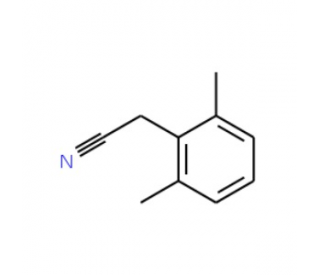详细说明
Species Reactivity
Mouse
Specificity
Detects mouse IL-19 in direct ELISAs and Western blots. In direct ELISAs and Western blots, no cross-reactivity with recombinant human
IL-19 is observed.Source
Monoclonal Rat IgG2b Clone # 350105
Immunogen
E. coli-derived recombinant mouse IL-19
Leu25-Ala176
Accession # Q8CJ70Formulation
Supplied 0.2 mg/mL in a saline solution containing BSA and Sodium Azide.
Label
Alexa Fluor 750
Applications
Recommended
ConcentrationSample
Intracellular Staining by Flow Cytometry
0.25-1 µg/10 6 cells
Mouse whole blood cells fixed with paraformaldehyde and permeabilized with saponin
Please Note: Optimal dilutions should be determined by each laboratory for each application. are available in the Technical Information section on our website.
Preparation and Storage
Shipping
The product is shipped with polar packs. Upon receipt, store it immediately at the temperature recommended below.
Stability & Storage
Store the unopened product at 2 - 8 °C. Do not use past expiration date.
Background: IL-19
Interleukin 19 (IL-19) is a member of the IL-10 family of cytokines (1). The IL-10 family is a class II alpha -helical collection of cytokines that contains two groups, a viral homolog and a cellular homolog group. Within the cellular homolog group, there are two additional groupings, one which uses IL-10 R2 as a signal transducing receptor (IL-10, IL-22 and IL-26), and one which uses IL-20 R2 as a signal transducing receptor (IL-19, IL-20 and IL-24) (2‑4). Mouse IL-19 is synthesized as a 176 amino acid (aa) precursor that contains a 24 aa signal sequence and a 152 aa mature region (5). Based on human studies, it is expected to be secreted as a glycosylated monomer, 35‑45 kDa in size (2, 6, 7). IL-19 is unusual in that it contains seven amphipathic helices (2, 4, 8). Mature mouse IL-19 shares 69% aa sequence identity with the mature human IL-19, and 85% and 68% aa identity to unpublished Genbank sequences for rat and canine IL-19, respectively. Although mouse IL-19 is active on human cells, human IL-19 is not active on mouse cells (5). IL-19 expression is limited to activated keratinocytes and monocytes, with a possible contribution from B cells (6, 9, 10). IL-19 binds a receptor complex consisting of the IL-20 receptor alpha (also known as IL-20 R1) and the IL-20 receptor beta (IL-20 R2) (3, 4, 11, 12). This receptor complex is also shared by IL-20 and IL-24. Notably, IL-19 is reported to actually bind to IL-20 R2, which is generally considered to be only the signal transducing receptor subunit (7, 13). Functionally, it has been reported that IL-19 both will and will not induce IL-6 and TNF production by monocytes (5, 14). It does, however, seem to drive T-helper cell differentiation towards a Th2 response, inducing both IL-10 and production of itself (5, 14, 15).
References:
Fickenscher, H. et al. (2002) Trends Immunol. 23:89.
Pestka, S. et al. (2004) Annu. Rev. Immunol. 22:929.
Zdanov (2004) Curr. Pharm. Des. 10:3873.
Gallagher, G. et al. (2004) Int. Immunopathol. 4:615.
Laio, Y.-C. et al. (2002) J. Immunol. 169:4288.
Gallagher, G. et al. (2000) Genes Immun. 1:442.
Pletnev, S. et al. (2003) Biochemistry 42:12617.
Chang, C. et al. (2003) J. Biol. Chem. 278:3308.
Romer, J. et al. (2003) J. Invest. Dermatol. 121:1306.
Wolk, K. et al. (2002) J. Immunol. 168:5397.
Dumoutier, L. et al. (2001) J. Immunol. 167:3545.
Parrish-Novak, J. et al. (2002) J. Biol. Chem. 277:47517
Preimel, D. and H. Sticht (2004) J. Mol. Model. 10:290.
Jordan, W.J. et al. (2005) Eur. J. Immunol. 35:1576.
Laio, S.-C. et al. (2004) J. Immunol. 173:6712.
Long Name:
Interleukin 19
Entrez Gene IDs:
29949 (Human); 329244 (Mouse)
Alternate Names:
IL-10C; IL19; IL-19; interleukin 19; MDA1; melanoma differentiation associated protein-like protein; NG.1Melanoma differentiation-associated protein-like protein; ZMDA1interleukin-19











 粤公网安备44196802000105号
粤公网安备44196802000105号